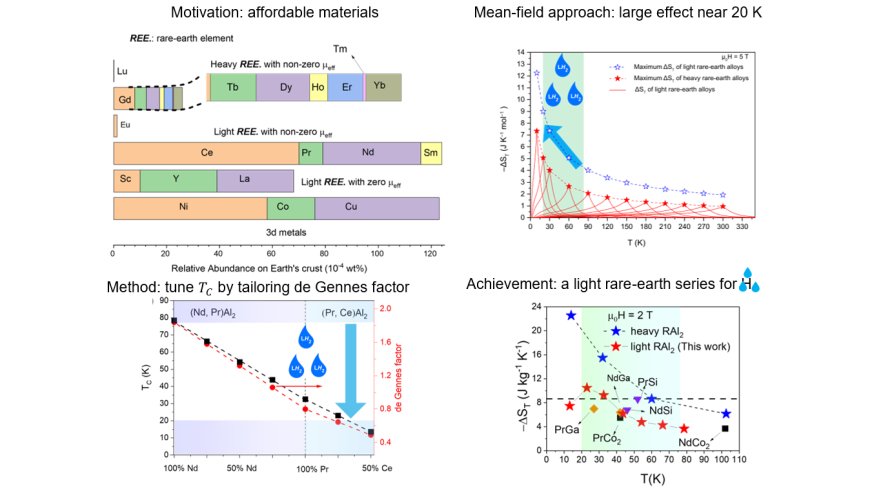Lighter but less critical: designing magnetocaloric materials for hydrogen liquefaction with light rare-earth Laves phases
New publication
2023/05/10

W. Liu, T. Gottschall, F. Scheibel, E. Bykov, N. Fortunato, A.Aubert, H. Zhang, K. Skokov, O. Gutfleisch
Designing magnetocaloric materials for hydrogen liquefaction with light rare-earth Laves phases
J. Phys. Energy 5 034001 (2023).
As an emerging technology with higher efficiency than the conventional liquefaction methods based on Joule-Thomson expansion, magnetocaloric hydrogen liquefaction could be a “game-changer” to liquid hydrogen industry. In the context of performance, heavy rare-earth based magnetoclaoric mateirals outshine their light rare-earth based counterparts. However, heavy rare-earth elements belong to the most critical metals, questing the feasibility of using heavy rare-earth based magnetocaloric materials for hydrogen liquefaction in an industrial scale. In the context of critically, light rare-earth elements are more suitable for large-scale applications for they are less critical.
Here we report our recent work on desinging light rare-earth based magnetoclaoric materials for hydrogen liquefaction using light rare-earth Laves phases. Based on a mean-field appraoch in this work, we demonstrate that light rare-earth alloys can also show large magnetic entropy and adiabatic temperaure changes in the temperature range required for magnetocaloric hydrogen liquefaction (20 ~ 77 K). Based on the mean-field appraoch, we propose turning the Curie temperaures of NdAl2 by mixing Nd and Pr in (Nd,Pr)Al2, and PrAl2 by mixing Pr and Ce in (Pr, Ce)Al2. Sucessfully, a material system of (RR’)Al2 (R: Pr, R’: Nd, Ce) is designed, showing large magnetic entropy and adiabatic temperaure changes withinin 20 ~ 77 K. Not only do we design a highly competitive light rare-earth based material system for magnetocaloric hydrogen liquefaction, but also we show that mixing light rare-earth elements on the rare-earth sublattice is an efficent method to talor the magnetoclaoric effects of the light rare-earth based materials.



